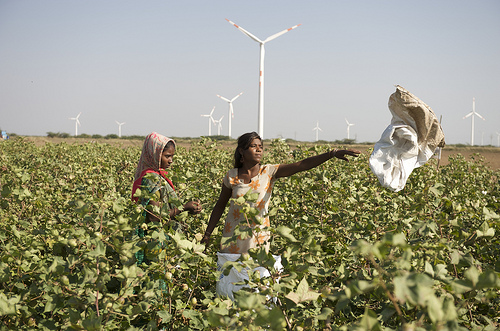On water and energy South Asia is the least integrated part of the world, but cooperation is key for future climate adaptation

South Asian collaboration over energy and water remains hostage to political trust deficit among countries.
Speaking at the Sustainable Development Conference held in Islamabad this week, water and energy experts from South Asian countries observed that the region is the least integrated bloc in the world on crucial energy and water issues. They pointed out that the region remains embroiled in inter-state and intra-state political conflicts. Lack of trust between governments has put a dampener on any political and economic collaboration efforts. It has also barred countries from understanding each other’s concerns with regard to shared water resources and from working jointly to address them.
The conference, organised by the Sustainable Development Policy Institute (SDPI) aimed to provide a space to discuss these challenges.
South Asian countries are linked by transboundary rivers, many of which are bound by treaties. India and Pakistan share the Indus, India and Bangladesh share the Ganga and Brahmaputra rivers, Nepal and India share Kosi, Mahakali and several others. Pakistan and Afghanistan share nine important rivers, including the Kabul River.
But existing water treaties do not encourage cooperative management of shared resources, bemoaned Gopikesh Acharya, research associate at the Nepal Centre for Contemporary Research, during a panel discussion. “There is urgent need to liberate common water resources from political grudges and restore and boost mutual trust between and among water sharing partners. This will help address water security problems that have become a growing threat to regional peace and security,” he said.
Nine of the ten major rivers in South Asia emerge from Tibet. But China is reluctant to enter into bilateral or regional agreements with downstream countries. “We have to factor China in when we talk about boosting transboundary collaboration in water sharing,” Acharya stressed.
Regional approach key to climate adaptation
Regional cooperation is essential if countries are to adapt to the growing effects of climate change in the Hindu Kush Himalayas, said Prakash C. Tiwari, professor of geography at Kumaun University in Nainital, Uttarakhand. All countries in the region are plagued with similar water and energy problems.
“The Hindu Kush Himalayan region constitutes the headwaters of some of the largest transboundary rivers of the planet and has the tallest water tower of the world that is source of livelihood for over 1.6 billion people,” Tiwari pointed out. “Yet it is confronted with reduced water flows and availability that has hurt hydropower generation. The natural and anthropogenic vulnerabilities the region is confronted with and which have intensified further – because of galloping population, soaring urbanization, poor or inadequate climate-resilient infrastructure development and degrading natural resource base due to unsustainable exploitation of natural resources – call for a regional approach by South Asian countries to address them and work together to build climate resilience.”
Heavily populated South Asia is fast becoming a water-stressed region, which could lead to conflict over water. “The region is likely to face 50% water deficit by 2030,” Tiwari predicted. He said water resource demand in India is expected to double and exceed 1.4 trillion cubic metres by 2050 while Pakistan faces the greatest water crunch with only around 1,000 cubic metres available per head per year. A fall below the mark would make it a water scarce country, according to UN standards.
Nepal and Bhutan are comparatively better off, but they need improved management to avoid water shortages in the future. Bangladesh is already subject to all kinds of downstream hydrological impacts that have intensified because of climate change, he elaborated.
Climate change provides the best opportunity to foster regional cooperation to cope with common water woes and boost water productivity. Tiwari felt institutions like the South Asian Association for Regional Cooperation and the International Centre for Integrated Mountain Development should play more pro-active roles to facilitate regional collaboration in water and energy. South Asia needs to create strong institutional arrangements, supported by clear regulations and agreements to bring the region out of the energy and water crisis, he said.
Cooperative wind power
Renewable energy was identified as one area for potential cooperation. Pakistan can benefit from India’s experience in the wind energy sector, argued Aisha Azhar, renewable energy expert and assistant professor at the Ghulam Ishaq Khan Institute Of Engineering Sciences And Technology in Khyber Pakhtunkhwa.
With India’s technical assistance, Pakistan can use its 340,000 megawatts of potential wind power to tackle the country’s growing energy crisis. “But this can materialise only if political will in both countries comes into play for the sake of improving socio-economic lives of their people,” Azhar cautioned.